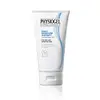What's inside
What's inside
 Key Ingredients
Key Ingredients

 Benefits
Benefits

 Concerns
Concerns

No concerns
 Ingredients Side-by-side
Ingredients Side-by-side

Water
Skin ConditioningSodium Laurylglucosides Hydroxypropylsulfonate
CleansingSodium Hydroxypropylsulfonate Decylglucoside Crosspolymer
CleansingPolyglyceryl-4 Caprate
EmulsifyingHydroxyethylcellulose
Emulsion StabilisingGluconolactone
Skin ConditioningEthyl Linoleate
EmollientGlycerin
HumectantSodium Cocoyl Hydrolyzed Amaranth Protein
Skin ConditioningSodium Cocoamphoacetate
CleansingNymphaea Caerulea Flower Extract
Skin ConditioningSalix Nigra Bark Extract
Skin ProtectingCamellia Sinensis Leaf Extract
AntimicrobialZeolite
AbsorbentLauryl Glucoside
CleansingSodium Lauryl Glucose Carboxylate
CleansingSodium Cocoyl Glutamate
CleansingSodium Hydroxide
BufferingCalcium Gluconate
HumectantPhenoxyethanol
PreservativeDisodium Phosphate
BufferingSodium Benzoate
MaskingPotassium Sorbate
PreservativeSodium Phosphate
BufferingPolysorbate 60
EmulsifyingParfum
MaskingWater, Sodium Laurylglucosides Hydroxypropylsulfonate, Sodium Hydroxypropylsulfonate Decylglucoside Crosspolymer, Polyglyceryl-4 Caprate, Hydroxyethylcellulose, Gluconolactone, Ethyl Linoleate, Glycerin, Sodium Cocoyl Hydrolyzed Amaranth Protein, Sodium Cocoamphoacetate, Nymphaea Caerulea Flower Extract, Salix Nigra Bark Extract, Camellia Sinensis Leaf Extract, Zeolite, Lauryl Glucoside, Sodium Lauryl Glucose Carboxylate, Sodium Cocoyl Glutamate, Sodium Hydroxide, Calcium Gluconate, Phenoxyethanol, Disodium Phosphate, Sodium Benzoate, Potassium Sorbate, Sodium Phosphate, Polysorbate 60, Parfum
 Reviews
Reviews

Ingredients Explained
These ingredients are found in both products.
Ingredients higher up in an ingredient list are typically present in a larger amount.
Glycerin is already naturally found in your skin. It helps moisturize and protect your skin.
A study from 2016 found glycerin to be more effective as a humectant than AHAs and hyaluronic acid.
As a humectant, it helps the skin stay hydrated by pulling moisture to your skin. The low molecular weight of glycerin allows it to pull moisture into the deeper layers of your skin.
Hydrated skin improves your skin barrier; Your skin barrier helps protect against irritants and bacteria.
Glycerin has also been found to have antimicrobial and antiviral properties. Due to these properties, glycerin is often used in wound and burn treatments.
In cosmetics, glycerin is usually derived from plants such as soybean or palm. However, it can also be sourced from animals, such as tallow or animal fat.
This ingredient is organic, colorless, odorless, and non-toxic.
Glycerin is the name for this ingredient in American English. British English uses Glycerol/Glycerine.
Learn more about GlycerinPolyglyceryl-4 Caprate comes from Capric Acid and Polyglycerin-4. It is an emulsifier.
Emulsifiers help stabilize a product. They do this by preventing ingredients from separating, such as oils and water which do not mix naturally.
Sodium Cocoyl Glutamate is a gentle cleanser and surfactant. It is the sodium salt of the Cocoyl Glutamic Acid and comes from coconut oil. As a surfactant, it helps lift dirt and oil to be washed away.
Sodium Cocoyl Glutamate also has an emolliating effect and can help leave the skin feeling soft.
Water. It's the most common cosmetic ingredient of all. You'll usually see it at the top of ingredient lists, meaning that it makes up the largest part of the product.
So why is it so popular? Water most often acts as a solvent - this means that it helps dissolve other ingredients into the formulation.
You'll also recognize water as that liquid we all need to stay alive. If you see this, drink a glass of water. Stay hydrated!
Learn more about Water